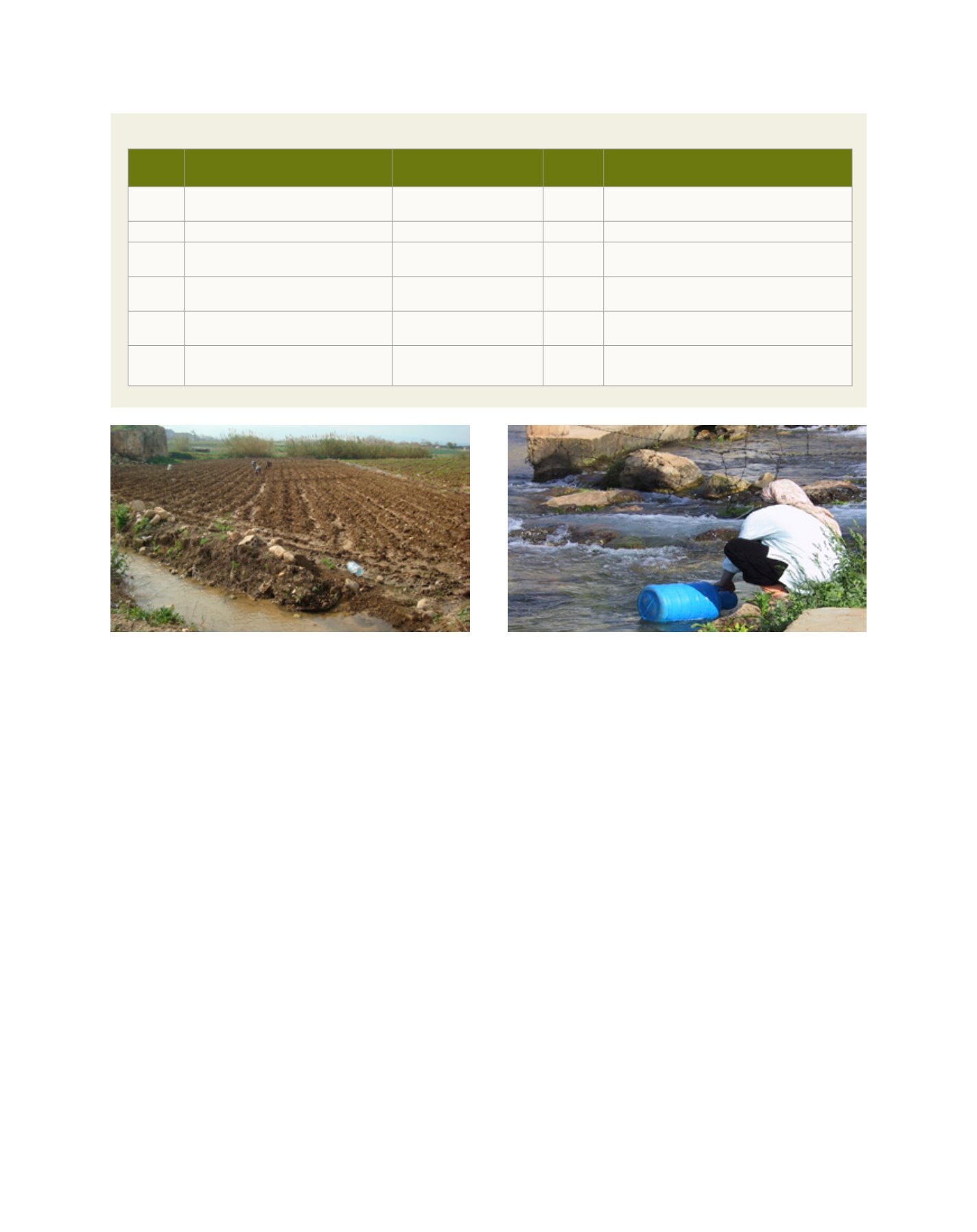

[
] 121
access
to
water
and
sanitation
for
all
on water and sanitation. The availability of tools to deter-
mine proper solutions pose a significant challenge. The table
shows that the six tested baseline indicators for water and
sanitation gave unfavourable results. There is clearly a need
to take action involving several implementations within an
integrated approach to secure water and sanitation systems.
Among the required monitoring actions, an inventory on
data and information must be prepared and supplemented
by continuous monitoring approaches using various tools
and methods. This can be reinforced by adopting successful
methods applied in different regions that have proved their
effectiveness in the enhancement and consolidation of water
and sanitation sectors. The support provided by UN Water is
of great importance and has emphasised this as the right time
for Lebanon to join the global monitoring system and to be
linked to the 2030 Agenda, given the experience and lessons
learned during the Millennium Development Goals period.
It is of the utmost importance to establish a mechanism
for data monitoring in the context of SDG 6 indicators and
this should include collaboration between various interested
sectors, mainly based on:
• Identifying the main concepts and elements of application
for SDG 6, and benefiting from lessons learned
• Using the baseline surveys done by CNRS-L as guidance
for implementing the tested indicators requested by the
custodians – UN Water, FAO, UNESCO, and UNECE
• Discussing the subject matter with stakeholders
• Establishing an SDG 6 Consortium for Lebanon represent-
ing the key persons working on water and sanitation
• Analysing the applicability of SDG 6 indicators in
Lebanon, considering data availability and need for an
optimal monitoring system.
According to the report submitted to UN Water by CNRS-L,
the proposed mechanism for monitoring the water supply
and sanitation in Lebanon can be built through:
• Coordinating with regional and international agencies
that have already established or followed successful SDG 6
monitoring mechanisms
• Participation in regional and international assemblies and
workshops on water supply and sanitation monitoring
• Identifying a focal person in each of the institutes related
to the monitoring of water supply and sanitation
• Coordinating focal persons with a team or consortium
that can be proposed as the SDG 6 implementing entity
for Lebanon
• Capacity building by various levels of stakeholder for the
implementation of SDG 6 objectives
• Establishing a platform for the consortium to be used as
a communication tool for discussion and data sharing
• Periodically conducting meetings and surveys between
consortium members
• Mainstreaming the results, outcomes and findings to the
public as well as to high-level decision makers.
Collection of contaminated (1800c/100ml) drinking water
Unmanaged irrigation due to lack of awareness
Image: CNRS-L
Image: CNRS-L
Source: CNRS-L, 2018
Indicator Description
Related problem in Lebanon Negative
impact
Capability for solution
6.2.3 Water bodies of water with good ambient
water quality
Well pronounced
High
Systematic monitoring control needed
6.4.1 Change in water use efficiency over time Increased water stress
High
Institutional coordination and awareness needed
6.4.2 Freshwater withdrawal as a proportion of
available freshwater resources
High level of freshwater
withdraw
High
Legislations and environmental controls must be
elaborated
6.5.1 Integrated water resources management
implementation
Poorly managed
Moderate New policies needed
6.5.2 Transboundary basin with an operational
arrangement for water cooperation
Few/weak treaties
Moderate Updated treaties should be followed
6.6.1 Change in the extent of water-related
ecosystems over time
Well pronounced
Moderate
to high
Institutional coordination and capacity building
needed
Baseline data for six SDG 6 indicators, Lebanon
















